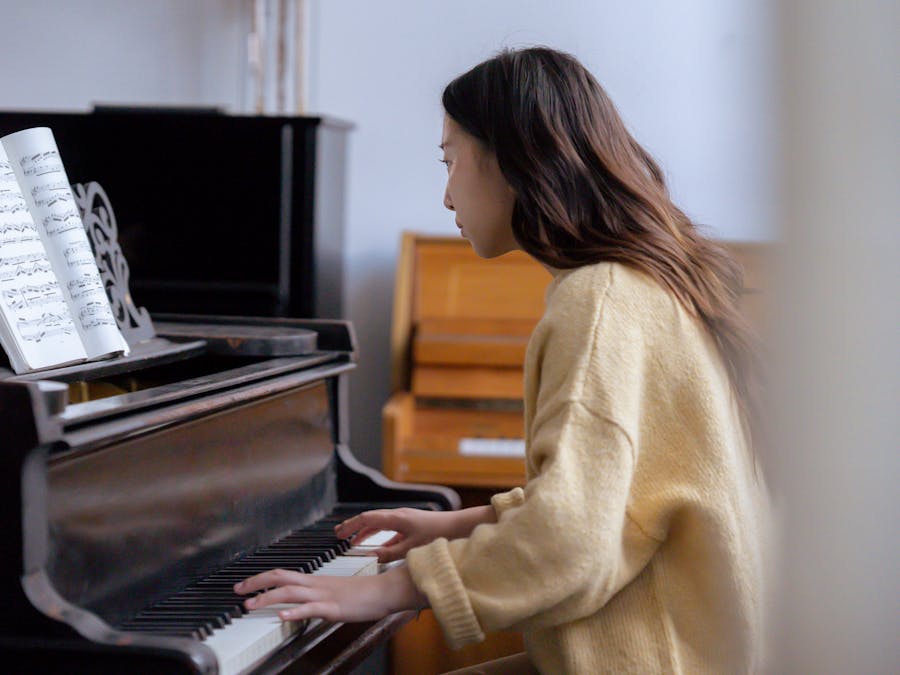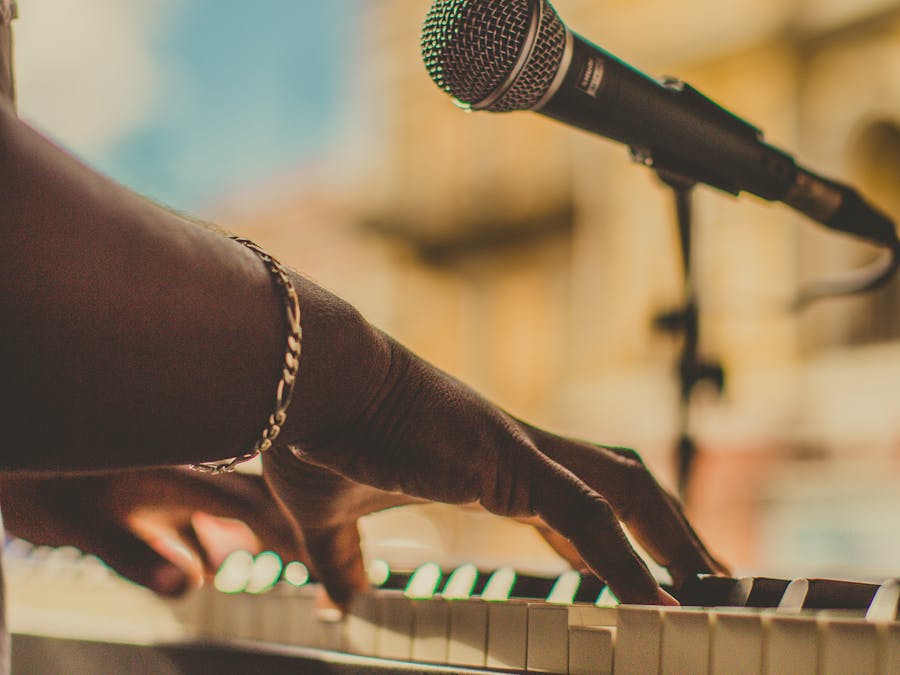 Piano Guidance
Piano Guidance
 Piano Guidance
Piano Guidance

 Photo: cottonbro studio
Photo: cottonbro studio
Most pianists are generally aware of what the two most common pedals on a piano do; the left pedal makes the sound softer, and the right pedal sustains the sound, making it longer.

A blues scale consists of 6 different notes, namely the root, flat 3rd, 4th, flat 5th, 5th and flat 7th of the major scale: 1 – b3 – 4 – b5 – 5 – b7.
Read More »
Top 10 Best Motocross Bikes of all time Yamaha PW50. You probably weren't expecting this bike to top our list, but for us the Yamaha PW50 is...
Read More »Most pianists are generally aware of what the two most common pedals on a piano do; the left pedal makes the sound softer, and the right pedal sustains the sound, making it longer. But many pianists are very confused by the middle pedal. Many simply don’t know how to use it, what it does or even what benefit it might provide to your music-making. So, what does the middle pedal on a piano do? Interestingly there is no one answer to this question. The middle pedal might, depending on which type of piano you have, do any one of four different things. This can be confusing, but is actually fairly straightforward; usually, the type of piano that you own roughly determines what the middle pedal does. Let’s go through all the use cases of the middle pedal in detail. After reading this, try out your piano to see what the middle pedal does! Contents show 1. Practice Pedal 2. Bass Sustain 3. Silent Pedal 4. Sostenuto pedal What Does the Left Pedal on the Piano Do? What Does the Right Pedal on the Piano Do? 1. Practice Pedal Generally found on: Upright pianos As a piano student or budding pianist, I’m guessing that you’re most likely to have an upright piano at home. Not all upright pianos have three pedals, but most high-end uprights such as the Yamaha U1 or Kawai K3 will have them. On these pianos, the middle pedal generally serves as a practice pedal, sometimes called a “mute” or “celeste.” What this does, as per the diagram above, is lowers a piece of felt between the hammers and the strings. That’s it; it’s got nothing to do with either of the other two pedals, and nothing to do with sustain, as we’ll come onto later. It simply serves as a way to make the piano quieter. This can be a very useful feature if you live in an apartment, or want to practice late at night without bothering other members of your household. This is the reason that you generally find this on upright pianos only; they are designed as practice instruments. I’ve yet to find a grand piano with this functionality. Usually you will be able to lock this pedal in place, usually by depressing it as far as it will go and then sliding it to the left or right. This means that you don’t have to continually press the pedal to keep the piano muted. Pretty useful if you need your practice to be a little quieter. 2. Bass Sustain Generally found on: Low-end grand pianos such as the Yamaha GB1, some upright pianos

The full version of Fur Elise is considered reasonably difficult, broadly an intermediate piece around grade 5, but a shorter arrangement of only...
Read More »
The 11 Hardest Musical Instruments to Learn Violin. The violin is a wooden stringed instrument that's part of a larger family of similar...
Read More »This is one of the less common use cases for the middle pedal, and one that I think is a little bit of a waste of time. Fortunately you don’t see this very often, and when you do, it’s usually on lower-quality grand pianos. I’ve never seen it myself on an upright, but I’ve been told that some uprights have them. A bass sustain pedal will only sustain the bass notes of your piano. It basically offers a kind of split sustain, whereby if you depress this pedal, only certain bass notes are sustained. There will be a cutoff in the middle of the keyboard, so if you use the pedal, notes to the left of this cutoff are sustained, and notes to the right are not. This means you can sustain the bass, while also playing staccato in the treble. In theory this is quite useful, and could lead to some musically interesting effects , but I am struggling to think of an area in any piece where you would actually need to use this functionality. It certainly won’t be a game changer for you to buy a piano with this feature, and in my opinion is a watered down version of the sostenuto pedal functionality, which we’ll get to later. 3. Silent Pedal Generally found on: Upright or grand pianos with a silent system fitted This version of the middle pedal is quite rare, and you will likely know if your pedal does this, as you will have bought a piano with a silent system. A silent system is a very useful invention that essentially turns your acoustic piano into a digital piano. A computer is fitted to your piano with a headphone jack, and electronics are placed under the keys to communicate with the computer. This allows you to play your acoustic piano as a digital piano, without bothering your neighbours. The silent pedal will serve two purposes; firstly, it will drop a bar between the hammers and the strings to prevent the hammers striking the strings when a key is pressed. This is how the piano becomes “silent.” It will also switch on the computer, enabling you to put your headphones in and play privately. For night-time playing, or when you just want to play privately, these pianos are an excellent choice. Just bear in mind that they are not completely “silent” so to speak; you will still hear the hammers knocking slightly against the rail that has been placed between the hammers and the strings. There will be no music audible until you put your headphones in, though. And now, the most common use case for the middle pedal:

The Ionian scale, aka the major scale is one of the most commonly used scales in jazz music. This scale has been used countless by some of the...
Read More »
But, there are several instruments that many people agree can get annoying after a while. ... The Kazoo. What is this? ... Didgeridoo. This...
Read More »
Pianoforall is one of the most popular online piano courses online and has helped over 450,000 students around the world achieve their dream of playing beautiful piano for over a decade.
Learn More »4. Sostenuto pedal Generally found on: Most grand pianos, all digital pianos with a middle pedal The vast majority of grand pianos and all digital pianos will include this functionality, especially higher-end pianos such as Steinway and Bosendorfer. This is the most common use case for a middle pedal, and is certainly the only one that composers have written for. It’s not seen very often in written music, but there are some examples of it. What the sostenuto pedal does is almost like a selective sustain function. If you press a key, and then press the sostenuto pedal, and let go of the key, that note will be sustained, but all other notes will be unsustained. The key you pressed remains sustained until you release the pedal. You can strike it again and it will be sustained again, without having to release and depress the pedal again. This is useful in certain music where you might need to have a bass chord sustained, for example, but with staccato figurations in the treble. This sounds very similar to the bass sustain pedal we spoke about earlier, but this is a slightly more refined version; this allows you total control over what notes are sustained and which ones aren’t.

These kids have little interest in most activities and no sense of curiosity about the world. They are rather passive and enjoy activities that...
Read More »
But if you keep playing without letting the skin grow back, you can do real and permanent harm to your skin, nerves, and blood vessels. In extreme...
Read More »
How to Practice Chord Voicings. The best way to practice chord voicings (and Jazz in general) is by playing actual songs. Try apply each chord...
Read More »
Research shows that stem cells harvested from baby teeth may have the potential to be manipulated into a variety of cells to repair damaged teeth,...
Read More »